Abstract
The protein binding of timegadine to albumin, serum, plasma and plasma enriched with the acute phase reactants alpha 1-acid glycoprotein, alpha 1-anti-trypsin and C-reactive protein was determined by equilibrium dialysis. The effects of other analgesic and anti-inflammatories (indomethacin, ketoprofen, paracetamol and sodium salicylate) and other basic drugs (disopyramide, lignocaine, propranolol and quinidine) on the binding of timegadine were also determined. Timegadine binding was concentration-dependent up to 0.5 micrograms/ml, but independent above this level up to 10.0 micrograms/ml, the mean and standard error being 93.8 +/- 0.5%. Albumin accounted for only 32.4% of timegadine bound to plasma. Plasma enrichment with the acute phase reactants led to significant increases in timegadine binding. Simultaneous dialysis with other drugs caused significant decreases in timegadine binding.
Full text
PDF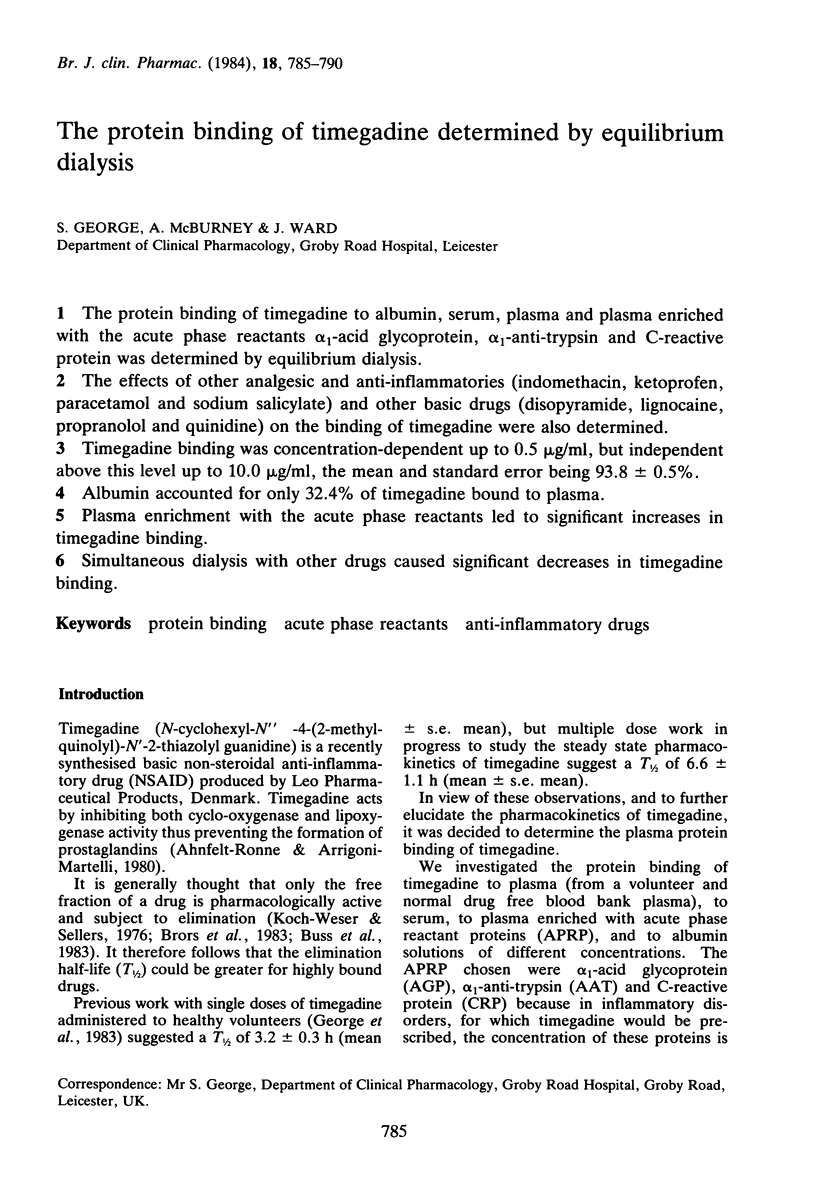
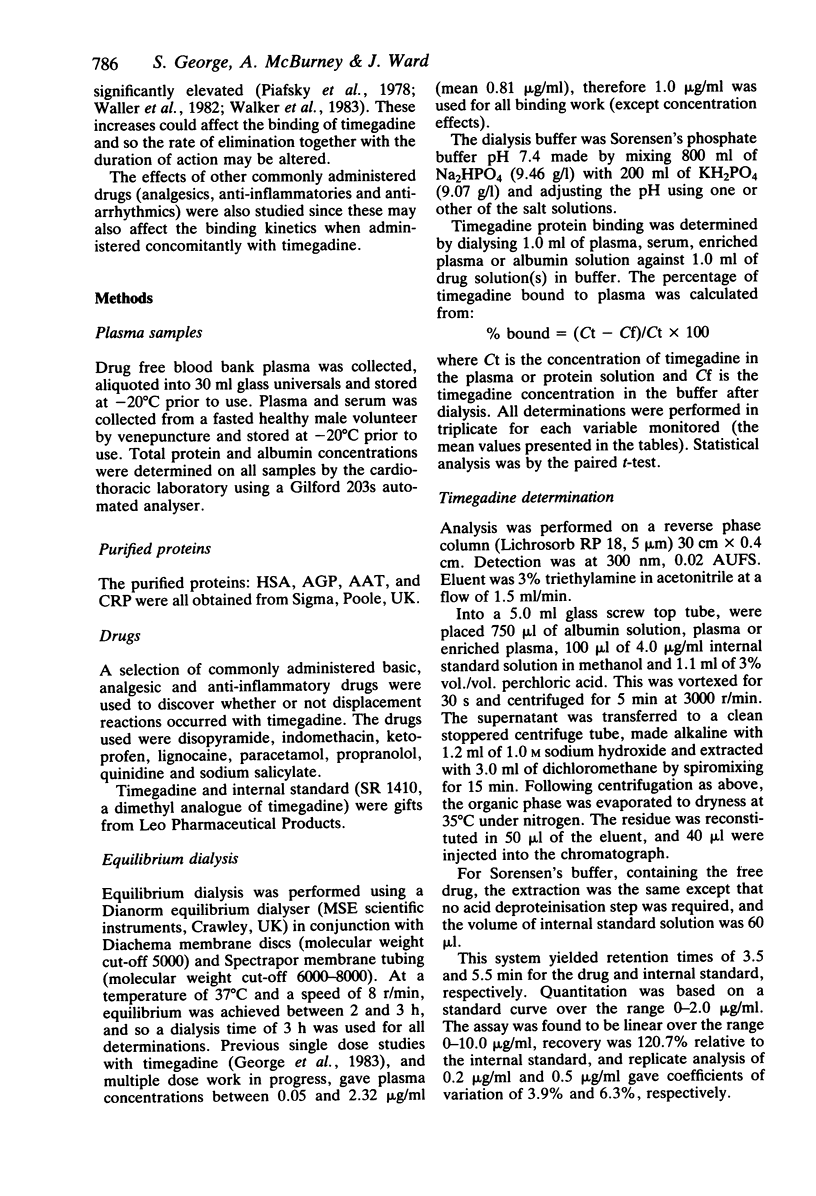
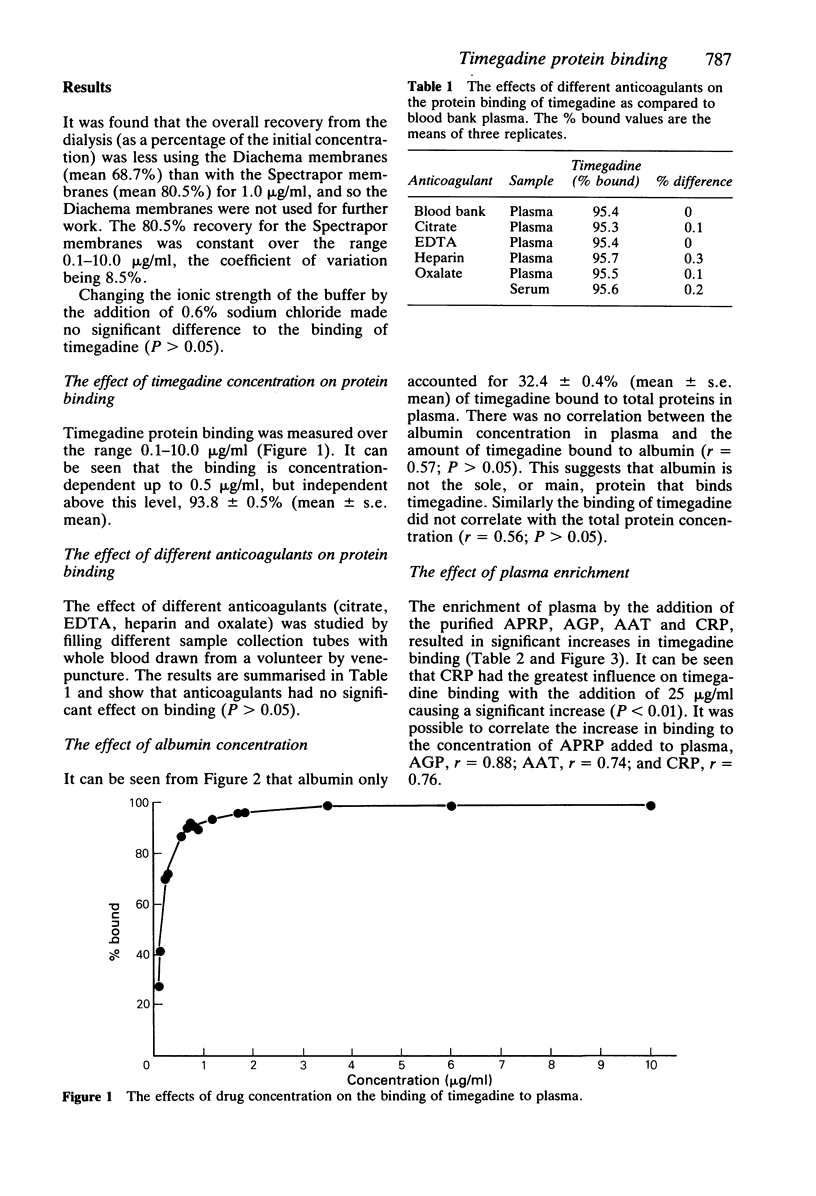
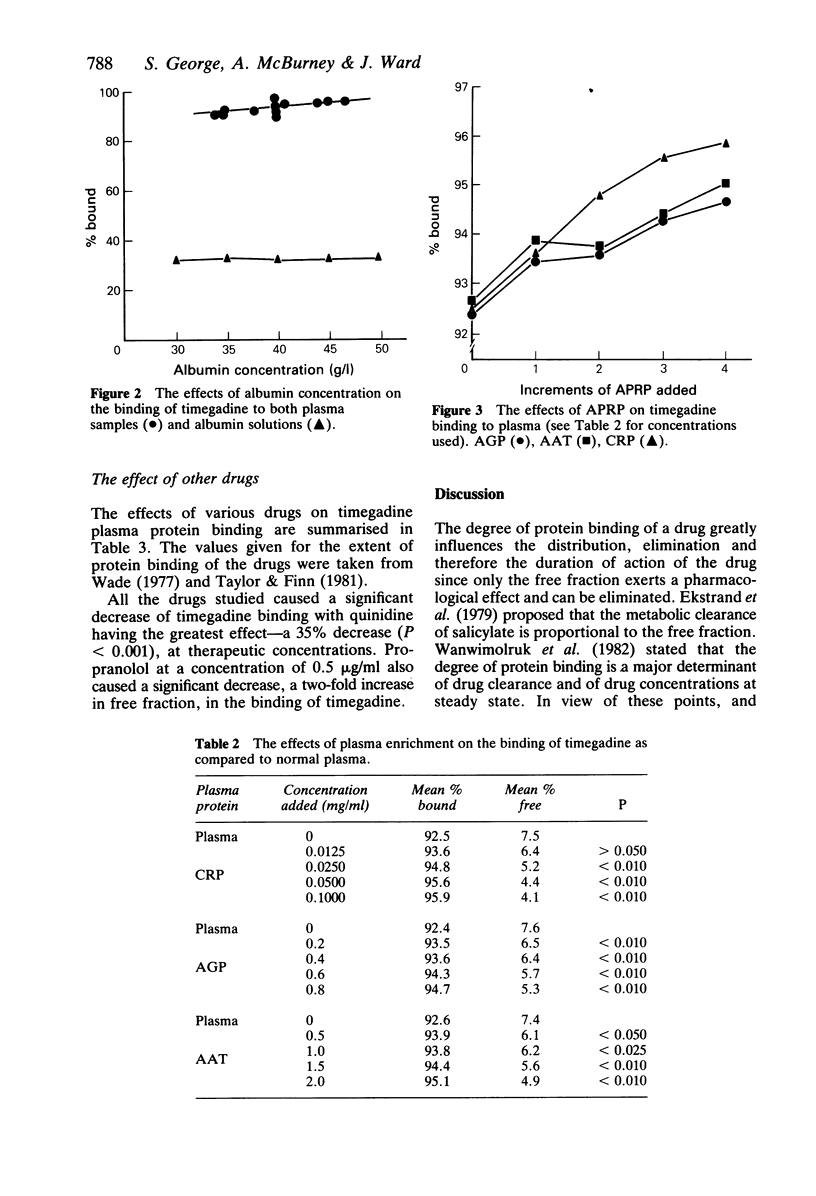
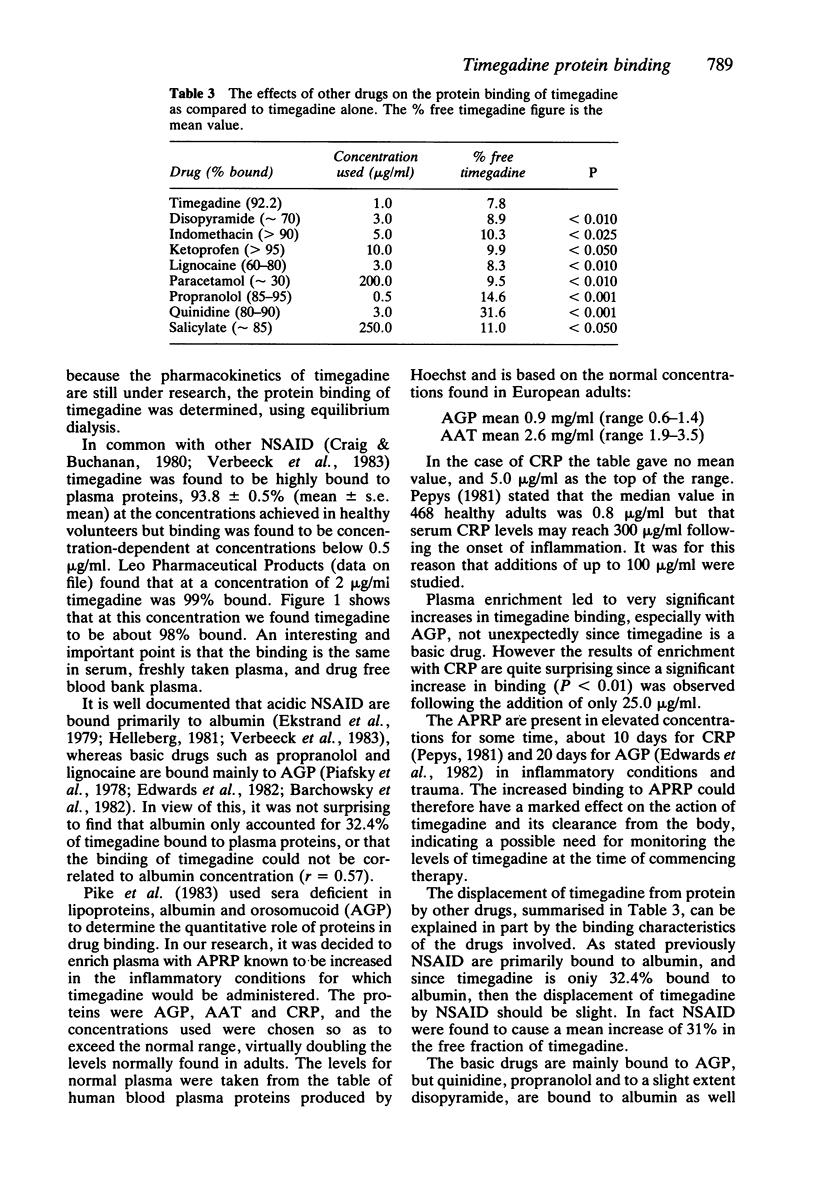
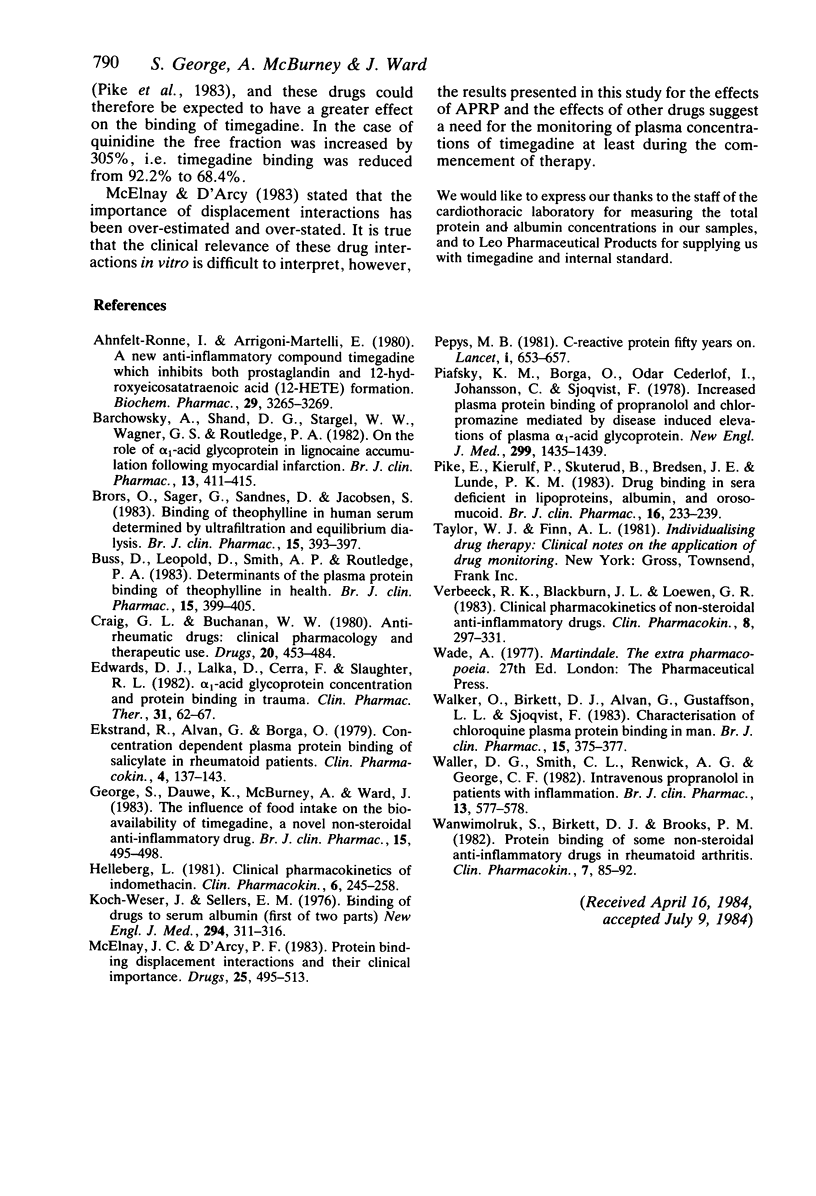
Selected References
These references are in PubMed. This may not be the complete list of references from this article.
- Ahnfelt-Rønne I., Arrigoni-Martelli E. A new antiinflammatory compound, timegadine (N-cyclohexyl-N"-4-[2-methylquinolyl]-N'-2-thiazolylguanidine), which inhibits both prostaglandin and 12-hydroxyeicosatetraenoic acid (12-HETE) formation. Biochem Pharmacol. 1980 Dec;29(24):3265–3269. doi: 10.1016/0006-2952(80)90301-9. [DOI] [PubMed] [Google Scholar]
- Barchowsky A., Shand D. G., Stargel W. W., Wagner G. S., Routledge P. A. On the role of alpha 1-acid glycoprotein in lignocaine accumulation following myocardial infarction. Br J Clin Pharmacol. 1982 Mar;13(3):411–415. doi: 10.1111/j.1365-2125.1982.tb01394.x. [DOI] [PMC free article] [PubMed] [Google Scholar]
- Brørs O., Sager G., Sandnes D., Jacobsen S. Binding of theophylline in human serum determined by ultrafiltration and equilibrium dialysis. Br J Clin Pharmacol. 1983 Apr;15(4):393–397. doi: 10.1111/j.1365-2125.1983.tb01520.x. [DOI] [PMC free article] [PubMed] [Google Scholar]
- Buss D., Leopold D., Smith A. P., Routledge P. A. Determinants of the plasma protein binding of theophylline in health. Br J Clin Pharmacol. 1983 Apr;15(4):399–405. doi: 10.1111/j.1365-2125.1983.tb01521.x. [DOI] [PMC free article] [PubMed] [Google Scholar]
- Craig G. L., Buchanan W. W. Antirheumatic drugs: clinical pharmacology and therapeutic use. Drugs. 1980 Dec;20(6):453–484. doi: 10.2165/00003495-198020060-00002. [DOI] [PubMed] [Google Scholar]
- Edwards D. J., Lalka D., Cerra F., Slaughter R. L. Alpha1-acid glycoprotein concentration and protein binding in trauma. Clin Pharmacol Ther. 1982 Jan;31(1):62–67. doi: 10.1038/clpt.1982.10. [DOI] [PubMed] [Google Scholar]
- Ekstrand R., Alvan G., Borga O. Concentration dependent plasma protein binding of salicylate in rheumatoid patients. Clin Pharmacokinet. 1979 Mar-Apr;4(2):137–143. doi: 10.2165/00003088-197904020-00006. [DOI] [PubMed] [Google Scholar]
- George S., Dauwe K., McBurney A., Ward J. The influence of food intake on the bioavailability of timegadine, a novel non-steroidal anti-inflammatory drug. Br J Clin Pharmacol. 1983 Apr;15(4):495–498. doi: 10.1111/j.1365-2125.1983.tb01537.x. [DOI] [PMC free article] [PubMed] [Google Scholar]
- Helleberg L. Clinical Pharmacokinetics of indomethacin. Clin Pharmacokinet. 1981 Jul-Aug;6(4):245–258. doi: 10.2165/00003088-198106040-00001. [DOI] [PubMed] [Google Scholar]
- Koch-Weser J., Sellers E. M. Binding of drugs to serum albumin (first of two parts). N Engl J Med. 1976 Feb 5;294(6):311–316. doi: 10.1056/NEJM197602052940605. [DOI] [PubMed] [Google Scholar]
- McElnay J. C., D'Arcy P. F. Protein binding displacement interactions and their clinical importance. Drugs. 1983 May;25(5):495–513. doi: 10.2165/00003495-198325050-00003. [DOI] [PubMed] [Google Scholar]
- Pepys M. B. C-reactive protein fifty years on. Lancet. 1981 Mar 21;1(8221):653–657. doi: 10.1016/s0140-6736(81)91565-8. [DOI] [PubMed] [Google Scholar]
- Piafsky K. M., Borgá O., Odar-Cederlöf I., Johansson C., Sjöqvist F. Increased plasma protein binding of propranolol and chlorpromazine mediated by disease-induced elevations of plasma alpha1 acid glycoprotein. N Engl J Med. 1978 Dec 28;299(26):1435–1439. doi: 10.1056/NEJM197812282992604. [DOI] [PubMed] [Google Scholar]
- Pike E., Kierulf P., Skuterud B., Bredesen J. E., Lunde P. K. Drug binding in sera deficient in lipoproteins, albumin or orosomucoid. Br J Clin Pharmacol. 1983 Sep;16(3):233–239. doi: 10.1111/j.1365-2125.1983.tb02155.x. [DOI] [PMC free article] [PubMed] [Google Scholar]
- Verbeeck R. K., Blackburn J. L., Loewen G. R. Clinical pharmacokinetics of non-steroidal anti-inflammatory drugs. Clin Pharmacokinet. 1983 Jul-Aug;8(4):297–331. doi: 10.2165/00003088-198308040-00003. [DOI] [PubMed] [Google Scholar]
- Walker O., Birkett D. J., Alván G., Gustafsson L. L., Sjöqvist F. Characterization of chloroquine plasma protein binding in man. Br J Clin Pharmacol. 1983 Mar;15(3):375–377. doi: 10.1111/j.1365-2125.1983.tb01513.x. [DOI] [PMC free article] [PubMed] [Google Scholar]
- Waller D. G., Smith C. L., Renwick A. G., George C. F. Intravenous propranolol in patients with inflammation. Br J Clin Pharmacol. 1982 Apr;13(4):577–578. doi: 10.1111/j.1365-2125.1982.tb01426.x. [DOI] [PMC free article] [PubMed] [Google Scholar]
- Wanwimolruk S., Birkett D. J., Brooks P. M. Protein binding of some non-steroidal anti-inflammatory drugs in rheumatoid arthritis. Clin Pharmacokinet. 1982 Jan-Feb;7(1):85–92. doi: 10.2165/00003088-198207010-00005. [DOI] [PubMed] [Google Scholar]


